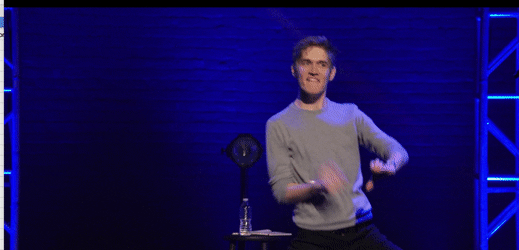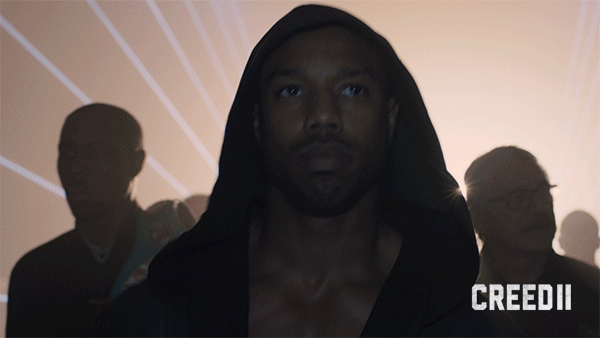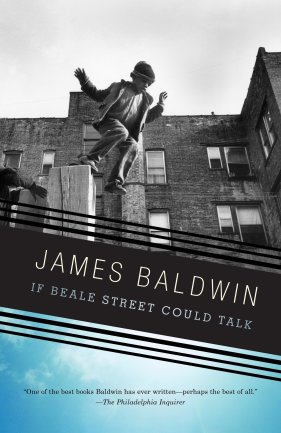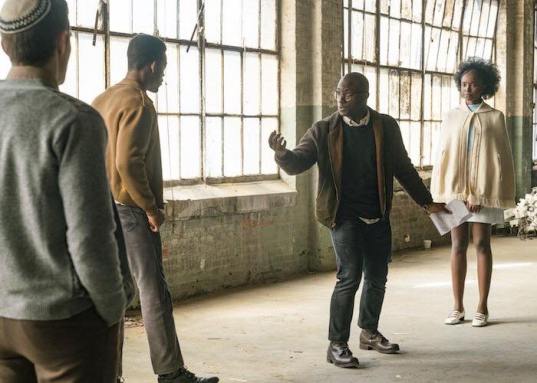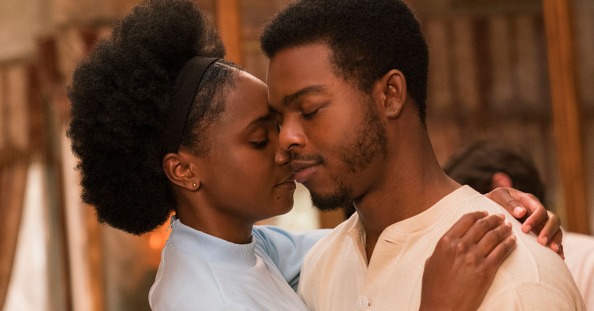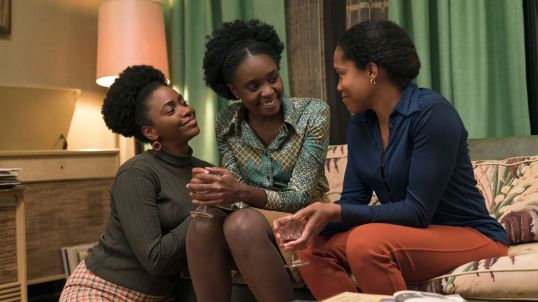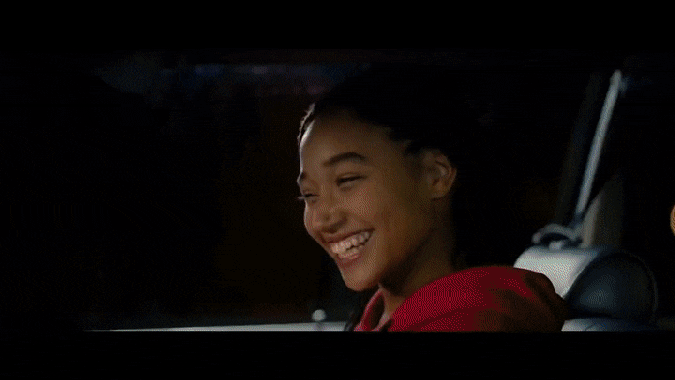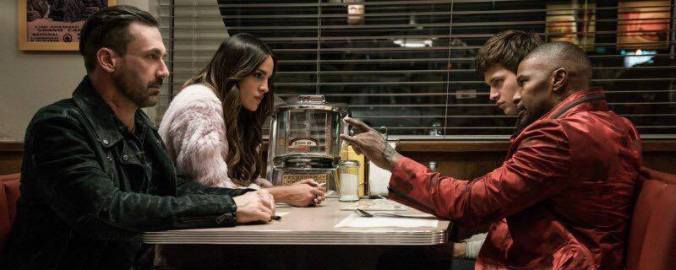Here we are at the beginning of a new year and at the beginning of a new decade. Before we enter the new ’20’s, let’s look back at the year that was in film. It was a year teaming with quality films but, also, a year that we spent some time visiting classics we hadn’t seen before. Most of these came from the often praised 1970’s watching movies like “One Flew Over the Cuckoo’s Nest” and “The Last Picture Show.” After padding my Letterboxd stats (follow me at ivansmoore), I’m probably of the mindset that with new techniques and technology, more distribution possibilities, and a more diverse community of storytellers, movies of our time keep getting better and better!
With that being said, I’d love to offer you the ten best experiences I had watching movies in 2019. Critics agree that this was an exceptional year. So first let me give you a couple more freebies in the form of some honorable mentions. You really can’t go wrong digging into the deeply spiritual A Hidden Life and The Two Popes or raising your blood pressure with Uncut Gems and Waves. We may also be in a Shia-ssance with the former Disney star offering his heart with The Peanut Butter Falcon and Honey Boy. I’d also invite you to add the female written and directed Booksmart and Queen & Slim to your watch lists. But there were ten movies that really hit me this year and here they are.
10.) The Dead Don’t Die (R – dir. Jim Jarmusch)
I walked out of the theater in absolute disbelief. What in the world had I just watched? I came to learn that this was pretty typical fare for director Jim Jarmusch. The Dead Don’t Die is a dead-pan social comedy zombie movie starring living legend, Bill Murray, and Kylo Ren himself, Adam Driver. When I say dead pan I really want you to understand there is nearly no emotion in this movie. The world is falling apart in front of the characters’ eyes while they go through the motions of life and that’s precisely the point. If an emotionless Bill Murray sighing through a zombie breakout isn’t enough for you, the movie sports an extensive supporting cast like Danny Glover, Selena Gomez, Tilda Swinton, and one catchy tune by Sufjan Stevens. Sitting in my car in the parking lot after, I was so perplexed I knew I wanted to see it again and again.

9.) Rocketman (R – dir. Dexter Fletcher)
The award for most horribly marketed film of the year goes to Rocketman. Like many, I saw the ads for this Elton John biopic and felt the echoes of last year’s Bohemian Rhapsody. That movie was a straight forward, semi-boring snoozefest that relied solely on a trendy actor and the timeless music of Queen. Rocketman is a full-blown Elton John musical! It’s framed with Elton in a rehab group therapy session and deconstructs his life through whimsical, brightly colored, surreal musical numbers. As much as Rami Malek inhabited Freddie Mercury’s giant teeth, Taron Egerton tackled singing every song while cutting many a rug through some incredible set pieces. Rhapsody felt like a string of youtube videos of Queen performances, but Rocketman was Elton John taking us on a journey towards some of the most important revelations of his life.
8.) A Beautiful Day in the Neighborhood (PG – dir. Marielle Heller)
Do we really need a Mister Rogers movie? Like every kiddo my age growing up in Southwestern Pennsylvania watching our beloved mayor of make-believe hanging out with Lynn Swann and going to the crayon factory, I’m very protective of Fred. I was nervous about the documentary Won’t You Be My Neighbor? but found it to be a delightful injection of common grace to everyone who saw it. Fred Rogers’ attitude and beliefs shined through as friends and family told his story alongside clips of the man himself. One of those friends was journalist Tom Junod. Beautiful Day is really his movie. Tom Hanks plays Fred in a supporting role. Junod wrote a now infamous profile of Mister Rogers for Esquire and it changed his life. He was known for cynical hit pieces and so came to Fred with a thirst for blood. Junod wasn’t ready for Fred’s hospitality or Joanne Rogers’ humility or Daniel Tiger’s hugs. We did need this movie and only Hanks could have done it. While you’re at it you can read Junod’s recent follow up where he talks about a life of being Fred’s friend.

7.) Marriage Story (R – dir. Noah Baumbach)
Marriage Story hands down features the best acting performances of the year while, at the same time, being one of the least enjoyable to watch. Scarlett Johansson and Adam Driver play Nicole and Charlie a couple working through a divorce. Watching the American divorce system on display and feeling Nicole and Charlie’s marriage crumble is heart shattering. Writer and director Noah Baumbach, who I usually find to be off-putting and pretentious, has probably crafted his masterpiece here drawn from his real life journey through divorce and his leads deliver his script like a decadent buffet. It’s salty, it’s sweet, and sometimes it’s just too much but I can’t stop eating.
6.) Avengers: Endgame (PG-13 – dir. Anthony & Joe Russo)
Remember when the first footage dropped from Captain America: Civil War? Marvel fans rejoiced because there on their screens was a staple of cross-over, event comics come to life. Two big lines of characters charging at each other ready for battle. The comic book “splash page” was on film like never before, and we all thought, “Wow, they did it.” Directors Joe and Anthony Russo had reached peak nerdom by giving us a dozen heroes running in an empty airport. Little. Did. We. Know. That was just an appetizer. Avengers: Endgame marks the end of a film endeavor we may never see duplicated. I recently did a rewatch and still felt every single tingle as the ultimate superhero movie built to its splash page. The score hit perfectly, the portals opened, and every bit of investment I’ve given as a fan of these heroes for most of my life paid off.
Read my extensive thoughts on Avengers: Endgame here!
5.) The Farewell (PG – dir. Lulu Wang)
Is there anything kind of funny or weird about your family? I’m going to go out on a limb and say there probably is. Then you are going to relate deeply to this personal story Lulu Wang gives us from her own life. In The Farewell, Awkwafina steps in to represent Wang as Billi whose family is dealing with the grim cancer diagnosis of her grandmother. The thing is, as her family explains, it is customary not to tell their elders of such a diagnosis. So they concoct a family gathering for everyone to subtly say their goodbyes. I spent most of the movie holding my breath hoping Billi doesn’t let the cat out of the bag but then it would explode out when the movie turned wildly funny and again when pressure brings Billi to tears. She’s struggling as her whole family silently suffers shuffling around their matriarch with smiley facades. What does it mean to carry your family’s burdens? We probably all do it whether we want to or not. With The Farewell, Wang shows us that our load doesn’t always have to be so heavy.
4.) Little Women (PG – dir. Greta Gerwig)
There is so much life in this fourth feature adaptation of Louisa May Alcott’s iconic novel. Sure I like Wynona Ryder and Christian Bale, but wow! Greta Gerwig built such chemistry and warmth in her adaptation that I wanted to jump through the screen. I wanted to have breakfast with the March sisters. I wanted to join the club along with Laurie. Gerwig’s lead is a familiar face to fans of her 2017 effort, Lady Bird. Saoirse Ronan is a great Jo and she might not even be the best performance in the movie! Florence Pugh caps off a career year making audiences love Amy for once in the character’s history. I might not be familiar enough with all of the adaptations to declare that this is the greatest of all time (though I still might), but I can say this was definitely one of the top five directed movies of the year.

3.) The Last Black Man in San Francisco (R – dir. Joe Talbot)
Just going by the title, you might think that this is some post-apocalyptic sci-fi movie like The Omega Man or I Am Legend. Movies about men standing alone in the world dealing with all that they’ve lost. So in a way, it might be. Last Black Man is a whimsical retelling of life story of the film’s lead Jimmie Fails. He’s wrestling to maintain both his family’s history and the eclectic culture of one of America’s most colorful cities. Jimmie is on the cusp of losing something dear to him and he fights for it with such innocence and poetry that you can’t help but root for him. He’s our guide through his family’s narrative and the narrative of the city he knows and can barely recognize. As Jimmie brings us along, we go through the layers of his life with him. It is about gentrification, but it’s also about family, friendship, masculinity, and so much more. It’s about life, what we fear to lose, and what we must hold on to.
Read Heather’s full review of Last Black Man here!
2.) Jojo Rabbit (PG-13 – dir. Taika Waititi)
The task was simple. Make a movie about a boy in the Hitler Youth who has a comically zany imaginary friend version of Adolph that he confides in. Never mind, that sounds impossible. So impossible, in fact, that maybe only one filmmaker could do it, Taika Waititi. What the director brings to this story set on the tail end of World War II, is his unique humor and heartfelt dramatic sensibilities we’ve seen before in films like Hunt for the Wilderpeople and What We Do in the Shadows. He allows this context to be what it was. It’s ugly and scary. Jojo spews all the hate he’s been taught in his young life. But he is still young and so as you cringe there is still big hope and some big laughs. The movie is really about the tearing away of Jojo’s imaginary friend. How that happens is what makes Waititi one of the best filmmakers we have today.
Read my full review of Jojo Rabbit here!
1.) Parasite (R – dir. Bong Joon Ho)
I hesitate to say much about my number one movie of the year. I purposefully avoided reviews and trailers before watching. All I had heard was the buzz around the new film from the same filmmaker that brought us Snowpiercer, The Host, and Okja. So I went in blind and was so glad I did! The story is so interesting and thrilling. It kept me guessing throughout its runtime about where the story was going and even what genre the film falls into. It was the best experience I had in the theater this year. I’m hoping that is enough to get you to watch it but, for those who need a little more, I did a spoiler-free review you can read here that talks about the themes it shares with Downton Abbey.















